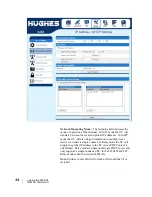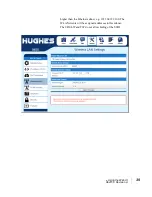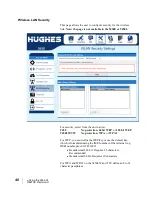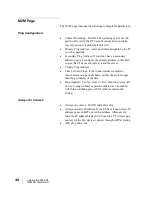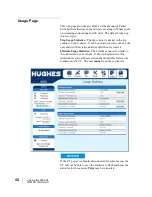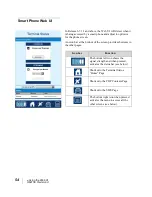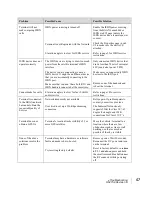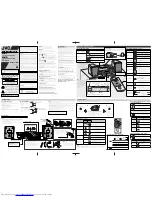
•
Using the Web UI
H64159 Revision A
43
Telephony Settings:
Call Progress Tones:
Two options are provided for call
progress tones. Option 1 is the default tones used in the USA.
Option 2 provides an alternative set of tones that are used in
Brazil and some European countries.
Call Progress
Tone
Option 1 (US)
Option 2 (Alternative)
Freq (Hz)
Cadence
Freq (Hz)
Cadence
Dial
350 + 440
Steady ON
425
Steady On
Ring Back
440 + 480 2 sec ON
4 sec OFF
Repeating
425
1 sec ON
4 sec OFF
Repeating
Network
Congestion
480 + 620
0.25 sec ON
0.25 sec OFF
Repeating
425
0.5 sec ON
0.5 sec OFF
Repeating
Busy
480 + 620
0.5 sec ON
0.5 sec OFF
Repeating
425
0.25 sec On
0.25 sec OFF
Repeating
ISDN Settings:
Enable ISDN Power Sourcing:
Check the box to turn on the
ISDN power sourcing and then click on “Apply”. The ISDN
device should receive 40V power immediately via the ISDN
cable. This field should be on unless you never use ISDN or
are using an ISDN device that has its own power source.
Select the outgoing call type using:
This box
controls the
mechanism used by the terminal to select the bearer type for
mobile originated calls. By default, “
the Device Bearer
capability
” is set as the trigger in this drop-down list. Most
ISDN devices correctly signal the call type (speech, 3.1KHz
audio, UDI, RDI) via the bearer capability.
There is also an option under the drop-down arrow to set the
trigger to use the
MSN
rather than the bearer. If there is a
problem using the bearer capability setting, this field can be
changed to use the MSN number instead.
Device MSN Settings - Voice/FAX Devices
Standard Voice:
By default, MSN 1 is used for standard voice
(speech). To receive incoming calls, you must program the
same MSN into your ISDN handset connected to the ISDN
port.
Premium Voice/Fax (3.1 kHz Audio):
By default, MSN 2 is
used for 3.1 KHz Audio. To receive incoming calls, you must
program the same MSN into your ISDN fax machine
connected to the ISDN port.






